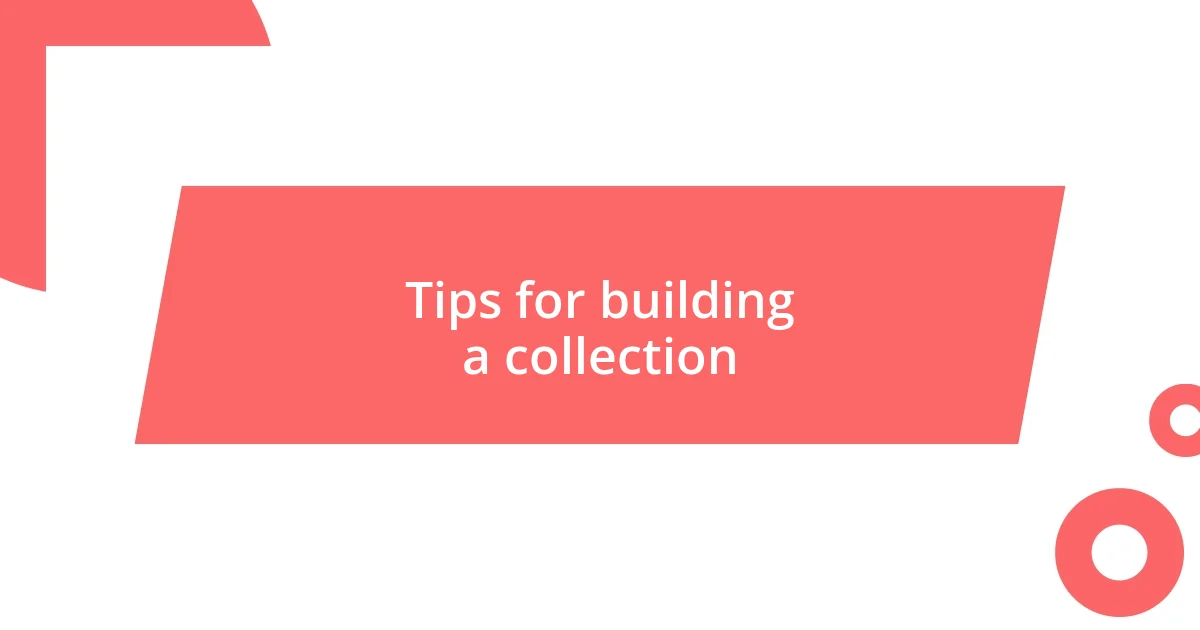Key takeaways:
- Collectible games foster community and connections, enhancing the experience beyond just the items collected.
- Strategic trading and market awareness are vital for successful collecting, as timing and research can impact trade outcomes.
- Personal connection to collectibles outweighs market trends, making a collection more meaningful and reflective of individual passions.

Introduction to collectible games
Collectible games have a unique charm that captivates many enthusiasts, myself included. The thrill of hunting for that elusive card or piece always brings a rush of excitement—like a treasure hunt where each find feels like a victory. Have you ever experienced the satisfaction of completing a rare set? It’s a moment of pure joy, reminiscent of childhood days spent swapping cards during recess.
I remember my first collectible game—the sheer fascination I felt flipping through the glossy pages of the accompanying guidebook. Each card told a story, blending artistry with strategy, pulling me into its universe. That blend of creativity and competition is what makes these games so appealing; they offer a gateway to worlds crafted by imagination, yet grounded in the rules we learn to navigate.
As I delved deeper, I realized that collectible games aren’t just about the items themselves; they’re about camaraderie and community. Whether trading cards or engaging in friendly matches, there’s an undeniable bond formed over shared interests and experiences. Have you ever bonded with someone over a favorite card? That connection can turn a hobby into a fulfilling passion.

Types of collectible games
When discussing the various types of collectible games, there’s a vibrant diversity that truly enhances the experience. I’ve enjoyed a few different formats throughout my journey, and each offers its own unique flavor. For instance, trading card games (TCGs) empower players to build customized decks from their collections, transforming each match into a strategic duel.
- Trading Card Games (TCGs): Players collect cards to build decks, competing against others.
- Collectible Miniatures Games (CMGs): Players assemble miniature armies, often painting and customizing them before battles.
- Digital Collectible Games: These games exist purely online, and players can collect cards or characters digitally, often integrating elements of strategy and resource management.
- Board Games with Collectible Elements: Some board games incorporate collectible pieces or expansions that add variety to gameplay, making each session a new adventure.
I fondly recall those Saturday mornings spent at my local game shop, where TCG tournaments unfolded like epic tales. Standing shoulder to shoulder with fellow enthusiasts, the air filled with anticipation and friendly rivalry, I felt part of something larger. Each deck I crafted reflected not just my strategies but also my personality and preferences; it was like putting a piece of myself out on the battlefield.

My journey into collectible games
My journey into collectible games started unexpectedly. I was invited to a friend’s house for what I thought was just a casual get-together. Little did I know, we would spend hours trading Pokémon cards in a living room filled with laughter and excitement. That experience ignited a passion in me that was more than just the cards; it was about the connections we built through shared experiences. I can still recall the thrill of finally acquiring that holographic Charizard—one card in particular that felt like the endorsement of my entire collection.
As I explored various collectible games, I was drawn to the art and strategy intricately intertwined with each piece. I remember pouring over the illustrations on the cards and miniature figures. Each detail told a story, whether it was the sweeping landscapes in a fantasy TCG or the intricate designs of collectible miniatures. The artistic expression resonated with my creativity. Whenever I’d win a game, it wasn’t just a victory—it was validation of my strategic thinking and dedication to learning the nuances of the game. The sense of accomplishment felt akin to finishing a challenging puzzle, where every piece fit perfectly into place.
Throughout my journey, I’ve discovered the joy of community. From participating in local tournaments to exchanging cards online, I’ve formed friendships that have enriched my life. One memorable experience was at a convention where I met a player who became my trading partner. We shared countless stories about our favorite games while searching for that elusive collectible—his camaraderie turned what could have been a solitary hunt into an unforgettable adventure. It’s these moments that truly highlight the beauty of collectible games: they are not merely about what we collect but also about the bonds we forge along the way.
| Element | Experience |
|---|---|
| First Game | Trading Pokémon cards at a friend’s house |
| Artistic Appeal | Poured over illustrations and story behind each card |
| Community Aspect | Formed friendships through tournaments and exchanges |

Tips for building a collection
Building a collectible game collection is as much about the journey as it is about the items themselves. I suggest starting with a budget. It’s easy to get carried away when you see that shiny new expansion or that rare card, but setting a limit can help you make smarter choices. I learned this the hard way; one impulsive purchase led me to scramble later to fill my wishlist. Have you ever found yourself in a similar predicament?
Next, engaging with the community can be incredibly rewarding. Attend local meetups, join online forums, or connect through social media groups. I once participated in a card swap event, and it not only helped me discover new additions to my collection but also introduced me to fantastic fellow collectors who shared their tips and stories. Sharing experiences can invigorate your passion and even lead to unexpected trades you wouldn’t consider otherwise.
Lastly, don’t underestimate the importance of patience. Collecting requires a discerning eye to identify what truly adds value to your journey. There was a time I spent months hunting for a specific card, only to find it trading hands multiple times before it finally landed in my collection. Patience pays off, and the thrill of finally adding that elusive piece can be more rewarding than a quick grab. What piece have you waited the longest to acquire, and how did it feel when it finally became yours?

Strategies for trading collectibles
When it comes to trading collectibles, I’ve learned that being strategic can make all the difference. For instance, I always research the current market value of my cards before I engage in a trade. I remember one memorable swap where I traded a common card for a rare foil version, simply because I had done my homework. Have you ever felt the rush of a surprise trade? It’s exhilarating!
Building relationships is equally crucial in trading. I’ve often found that reaching out to other collectors can lead to mutually beneficial trades. Once, I connected with someone through an online forum, and we discovered we had overlapping interests. We spent hours discussing our collections and ended up orchestrating a trade that both of us were thrilled about. Have you ever struck a deal based on sheer enthusiasm rather than just value? Those connections can lead to unexpected treasures.
Lastly, timing your trades can be paramount. I tend to wait for the right moments, like after a game tournament when interest in certain cards skyrockets. I recall waiting for weeks to trade a card I valued highly, knowing that the buzz around the game would enhance my bargaining power. That patience paid off, as I eventually secured multiple cards I’d been hunting for a long time. When has waiting for the right moment led to a successful trade for you? It’s moments like these that keep the thrill alive!

Valuing and appraising collectible games
Valuating and appraising collectible games requires a combination of market knowledge and emotional insight. I’ve faced instances where the estimated values differed drastically from my attachment to certain items. For example, I was once offered a sum that seemed generous for a seldom-played expansion, but I declined because the joy it brought me during game nights was worth far more. How do you balance emotional value against market worth in your collection?
Another essential aspect is to keep up with trends and historical data in pricing. There was a time when I didn’t pay much attention to market fluctuations. I learned the hard way when a prized card online soared in value overnight after a prominent tournament featured it. I felt a mix of regret and realization; staying updated is essential for any serious collector. How often do you check the market to ensure your collection reflects its true value?
Finally, grading your items accurately can significantly impact their appraisal. I vividly remember the anxiety when sending a few of my rare cards for grading. The anticipation was nerve-wracking, but the knowledge that they were now encased and preserved for future trade or sale made it worth the wait. Have you ever experienced that mix of fear and excitement when it comes to submitting your collectibles for appraisal? It’s a transformative part of the journey, elevating both your collection and your collecting experience.

Lessons learned from my experiences
One significant lesson I’ve learned is the importance of patience in the world of collectibles. I remember rushing into a trade once and regretting it almost immediately when I found out the value of my card skyrocketed the next week. That experience taught me that taking the time to analyze the market trends can often lead to better decisions, helping me feel more confident and in control of my collection. Have you ever acted impulsively and later wished you’d waited?
Another key insight revolves around understanding your personal collection. I used to focus on what was popular at the moment rather than what truly resonated with me. After selling my favorite card in a bid to keep up with the trends, I realized that the joy of collecting came from the items I connected with emotionally. This shift has made my collection feel more like a reflection of my journey rather than just an investment. Can you recall a moment when you prioritized personal connection over market trends?
Lastly, I found that sharing experiences with other collectors can be incredibly rewarding. At a local game store, I stumbled into a conversation with another enthusiast about our favorite sets. That casual chat led to a new friendship and many weekend game nights filled with laughter and trading stories about our collections. The bonds formed through sharing our experiences have enriched my collecting journey in ways I never anticipated. How has connecting with fellow collectors shaped your own experiences in this world?















